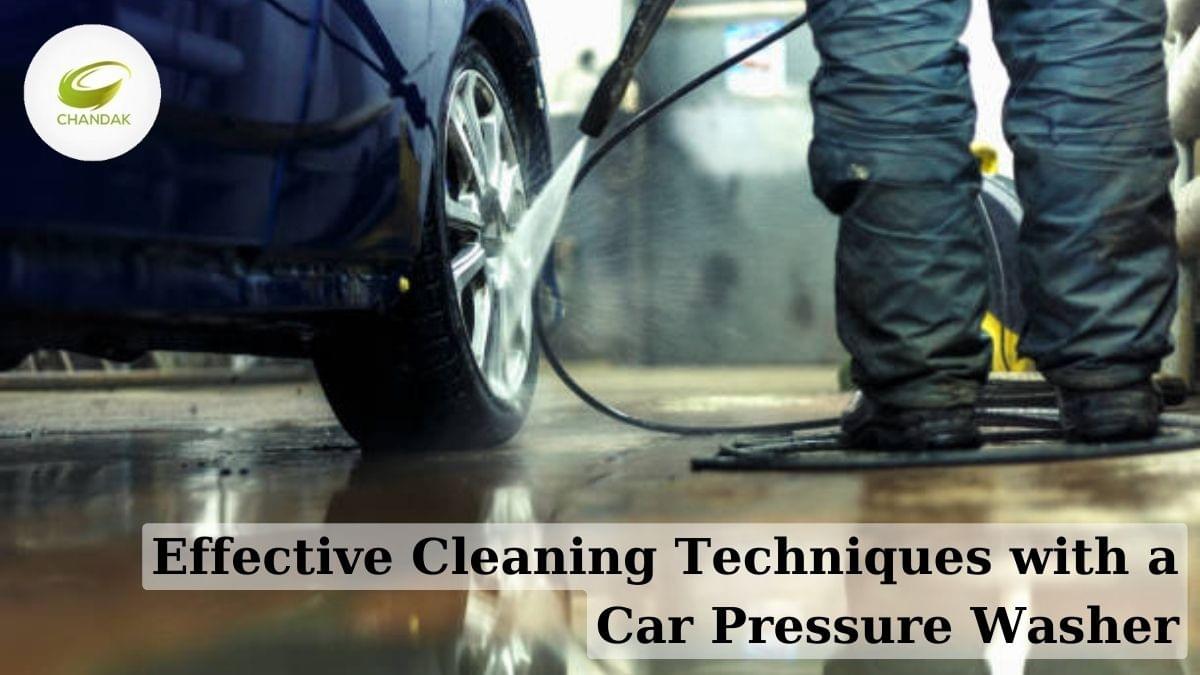
Maintaining a like-new finish on your car is crucial, and regular cleaning is the most important step to achieve this. A proper car wash not only keeps your vehicle looking great but is also essential before undertaking any detailing job, such as paint correction or waxing. Experts suggest washing your car every two weeks, depending on your driving habits and environmental conditions. With such frequency, make the process fast, effective, and easy.
Easily bring the car wash experience to your home by using a high pressure car washer. Follow our instructions, and with a bit of care, you will achieve excellent results.
Step 1: Remove Leaves And Twigs
Begin by manually removing any loose, coarse materials such as leaves or twigs from your car. This initial step helps prevent potential scratches to the paint when using the domestic washers on the vehicle.
Step 2: Rinse Off Dirt
Now, it is time to start using the pressure washer. Begin with the fan jet nozzle at the lowest pressure setting, maintaining a distance of at least 30 cm from the car to avoid damaging the paint and soft rubber parts. Rinse away any coarse dirt, and you can also use the high-pressure cleaner to rinse the rims and tires. Avoid directing strong jets of water directly at rubber elements during this process.
Step 3: Apply Cleaning Agent
If your wheel rims are heavily soiled, apply wheel rim cleaner to them. Pour car shampoo into the spray set included with the pressure washer, following the instructions for use, and attach the spray set to the pressure washer. Spray the cleaning agent over the metal areas and paintwork. Avoid windows and mirrors as car shampoo contains wax that is not suitable for these surfaces. Allow the cleaning agent to work for a few minutes.
Step 4: Remove Dirt
Attach the wash brush to the pressure washer to clean the car. You can use a soft sponge for the same purpose. Apply the same method to clean the wheel rims where the cleaning agent should have loosened the dirt.
Step 5: Rinse and Dry
Rinse off your car with clean water from the pressure washer until no dirt or cleaning agent remains. Afterwards, dry the body using a soft cloth or a chamois.
Before You Start
● Keep the Protection On
When working with powerful tools like pressure washers, prioritize safety and use effective protective clothing. This includes safety glasses, ear protection, and other necessary gear. Refer to the operating instructions for your specific product for detailed information. Before using your pressure washer for the first time, make sure to thoroughly understand the tool and ensure it is in perfect condition before each use. Keep in mind that personal protective equipment complements safe working techniques and is not a substitute for them.
● Cannot Use Pressure Washer Anywhere
Washing a car with a pressure washer on your property or in public spaces is not permitted in all areas. The water jet can dislodge oil from the car and thus there are chances for oily water to enter the ground or sewage system. Even if the wastewater is free of oil, it should not be allowed to drain into the sewage system or open water bodies. To make agriculture safe, inquire about the relevant regulations from your local authority.
Some Additional Tips
● Avoid Extreme Temperatures
When washing your car, avoid exposing it to dramatic changes in temperature. For instance, using a pressure washer in winter when temperatures are below -10°C might cause fine cracks in the paintwork. Similarly, during hot summer conditions, it is best to wash your car in the morning or evening to prevent shocking sun-heated paint with cool water. In simple words, it is recommended to avoid car washing when temperatures are extremely high or low.
● Use Jet Wisely
To safeguard the paintwork when using a pressure washer, direct the jet at a shallow angle to the exterior paint and initiate at a low-pressure setting. Maintain a sufficient distance from the car bodywork, ideally at least 30 cm. If necessary, gradually increase the pressure until it effectively removes dirt. Avoid excessively high pressure, as levels over 200 bar may damage the paint.
FAQs
Q1. What is the best time for the car wash?
A: The ideal time to wash your car is during moderate temperatures. In summer, mornings and evenings are preferable, while it is advisable to avoid washing your car in very low temperatures to prevent potential paintwork damage from thermal shock.
Q2: Which pressure washer nozzle is suitable for car washing?
A: Use the fan jet nozzle on your pressure washer for car cleaning.
Q3: Can a pressure washer harm car paint?
A: Incorrect use of a pressure washer can damage car paint. Use a fan jet nozzle at the lowest effective pressure setting (never exceeding 200 bar), and ensure the water jet is applied at a shallow angle to the paintwork, not directly into it.
Q4: What PSI is required for cleaning a car with a pressure washer?
A: A minimum of 1150 PSI is required for cleaning a car with a pressure washer. Anything over 3000 PSI risks damaging your car.
Q5: Is it safe to pressure wash a car engine?
A: While it is possible to pressure wash a car engine, it is not recommended, as many engine components could be damaged.
Conclusion
Washing a car becomes way easier with the use of a pressure washer. Gone are the days of spending hours in the sun with a hose struggling to remove mud from the wheel wells. Say goodbye to wasted water during each car wash. If you are ready to enhance the efficiency and effectiveness of your car washing process, you are on the right path. This improvement will boost efficiency and productivity.